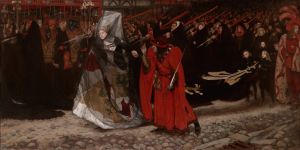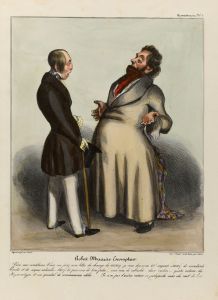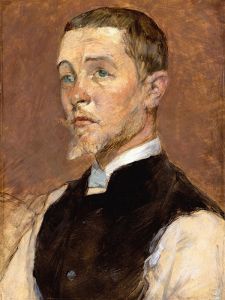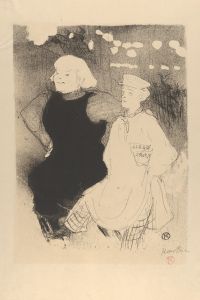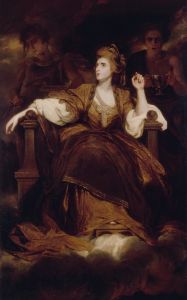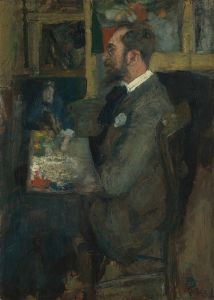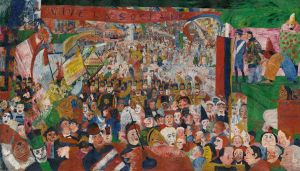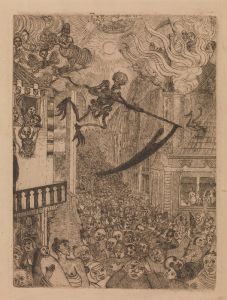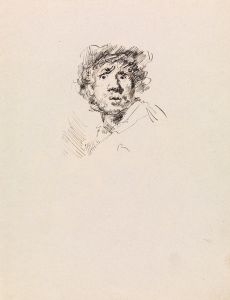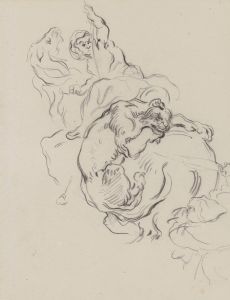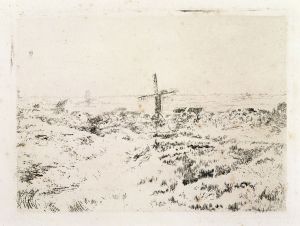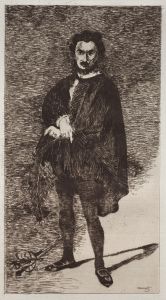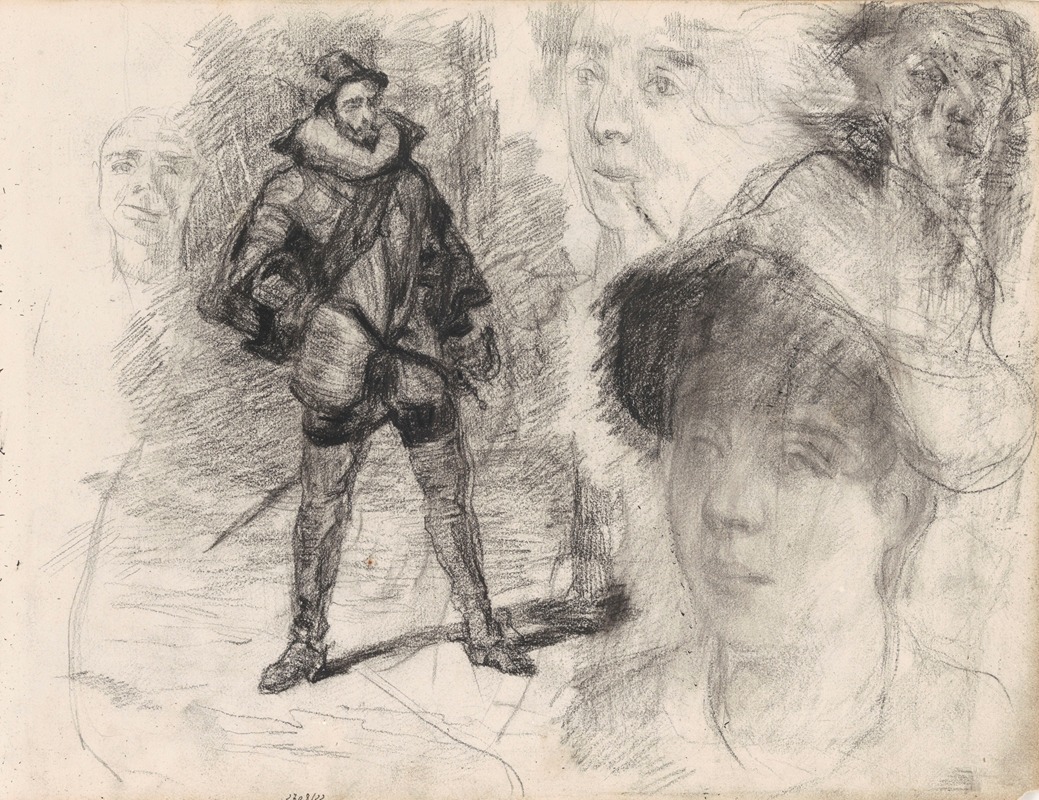
Don Quixote and Four Faces
A hand-painted replica of James Ensor’s masterpiece Don Quixote and Four Faces, meticulously crafted by professional artists to capture the true essence of the original. Each piece is created with museum-quality canvas and rare mineral pigments, carefully painted by experienced artists with delicate brushstrokes and rich, layered colors to perfectly recreate the texture of the original artwork. Unlike machine-printed reproductions, this hand-painted version brings the painting to life, infused with the artist’s emotions and skill in every stroke. Whether for personal collection or home decoration, it instantly elevates the artistic atmosphere of any space.
James Ensor's "Don Quixote and Four Faces" is a notable work by the Belgian painter and printmaker, who is often associated with the Symbolist movement and is considered a precursor to Expressionism and Surrealism. Ensor's work is characterized by its vivid use of color, grotesque imagery, and a penchant for the fantastical and the satirical.
"Don Quixote and Four Faces" reflects Ensor's fascination with the literary character Don Quixote, the errant knight from Miguel de Cervantes' famous novel. Don Quixote is a figure that has inspired countless artists, writers, and thinkers due to his complex nature as a dreamer and a symbol of idealism and folly. Ensor's interpretation of Don Quixote is consistent with his broader artistic themes, which often explore the absurdity of human existence and the thin line between reality and illusion.
In this work, Ensor employs his signature style, which includes a vibrant palette and a somewhat chaotic composition. The painting features Don Quixote alongside four distinct faces, which may represent different aspects of human emotion or character. Ensor's use of masks and faces is a recurring motif in his oeuvre, symbolizing the multiplicity of identity and the masks people wear in society.
Ensor's artistic approach often involved a satirical critique of contemporary society, and "Don Quixote and Four Faces" can be seen as a continuation of this theme. By juxtaposing the idealistic figure of Don Quixote with the ambiguous faces, Ensor might be commenting on the multifaceted nature of human identity and the often contradictory impulses that drive individuals.
James Ensor was born in 1860 in Ostend, Belgium, and spent most of his life there. He was a central figure in the Belgian avant-garde movement and was associated with the group Les XX, which included other notable artists such as Fernand Khnopff and Théo van Rysselberghe. Ensor's work was initially met with resistance due to its unconventional style and subject matter, but he eventually gained recognition and acclaim, particularly in the latter part of his career.
Ensor's influence on modern art is significant, as his work prefigured many of the themes and techniques that would become central to 20th-century art movements. His exploration of the grotesque, the fantastical, and the psychological paved the way for later artists such as Edvard Munch and the Surrealists.
"Don Quixote and Four Faces" is a testament to Ensor's unique vision and his ability to blend literary inspiration with his distinct artistic style. The painting remains an important piece within Ensor's body of work and continues to be studied for its complex interplay of imagery and meaning.
Ensor's legacy is preserved in numerous collections around the world, with his works housed in major museums such as the Royal Museums of Fine Arts of Belgium in Brussels and the J. Paul Getty Museum in Los Angeles. His contribution to the development of modern art is widely recognized, and his works continue to captivate audiences with their boldness and originality.





